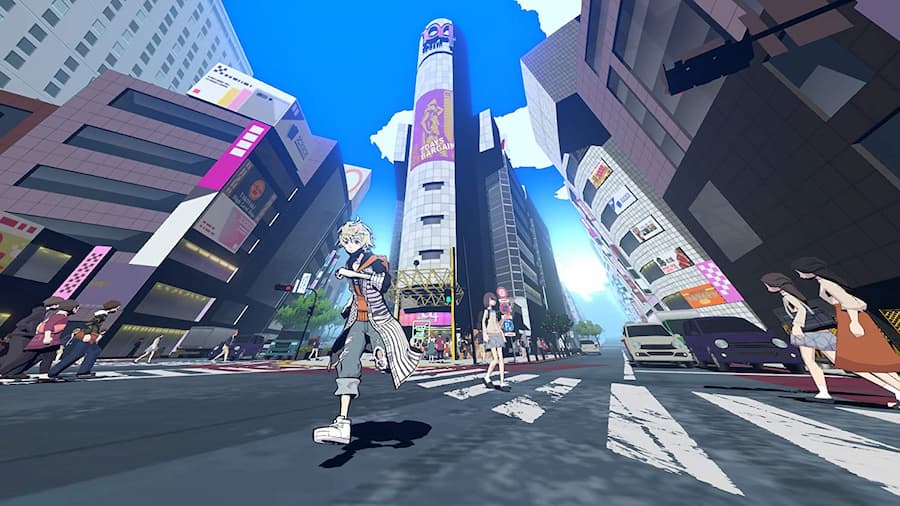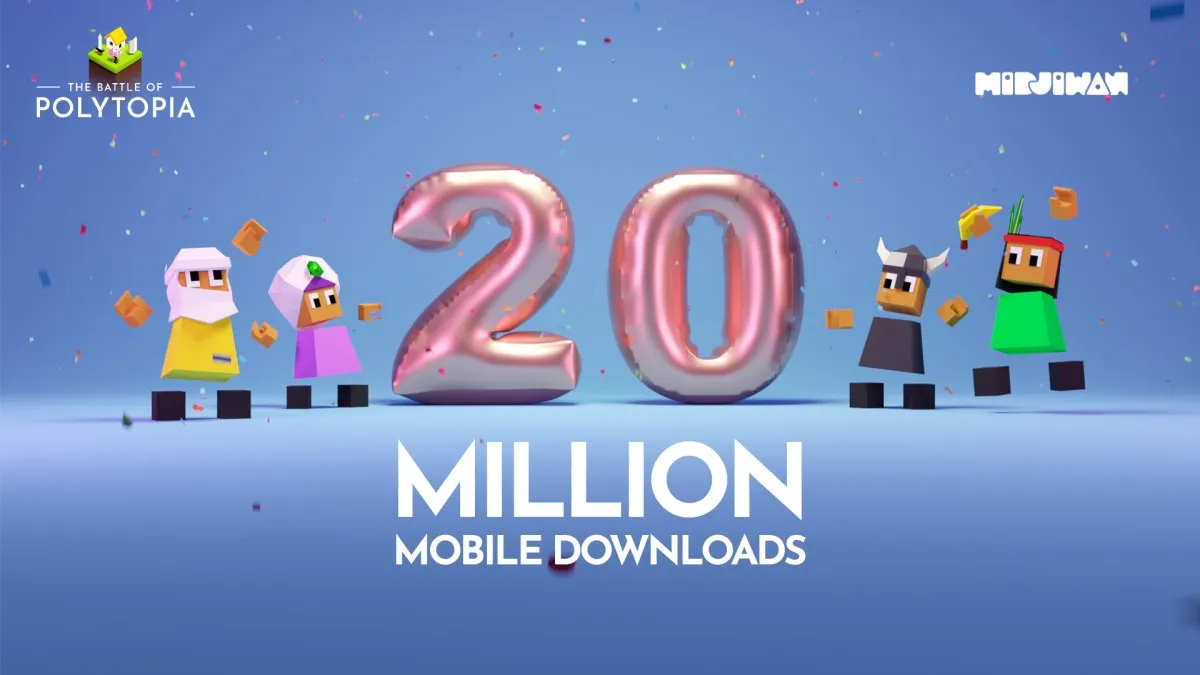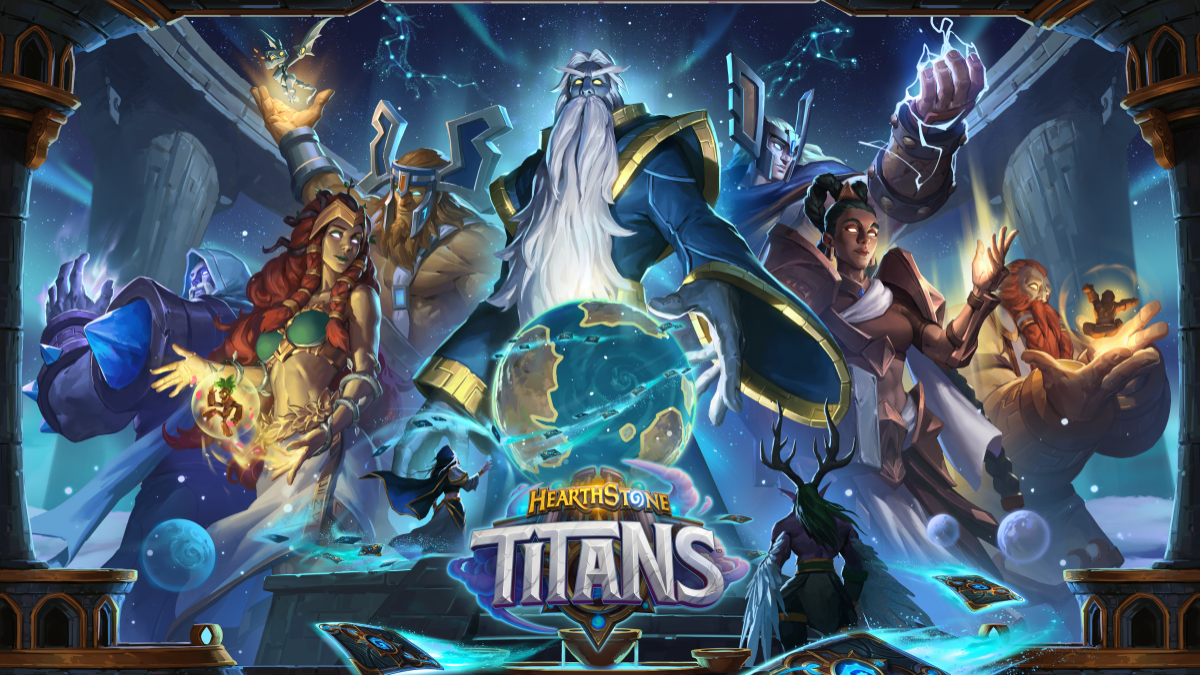NEO: The World Ends with You is a huge, unique game that fans have really been enjoying since its release on both consoles and PC. I got to field some questions to various members of NEO‘s team, and they were gracious enough to fill us in on the process of making the game. These members include the game’s Producer Tomohiko Hirano, Series Director Tatsuya Kando, and Game Director Hiroyuki Ito. On the translation front, three of the game’s English translators explained all about the demanding endeavor to translate and localize the title. They’re Matt Furda, the lead English translator, who is joined by the translators Christopher Orr and Katherine Ellerhorst.
Without further ado, let’s jump in.
NEO: The World Ends With You — On game design and localization interview
PCI: What were the hardest parts about creating a sequel to a game that came out nearly a decade and a half prior?
Hirano: I believe both Mr. Kando and Mr. Ito will talk about specific game content, so my answer will be from a somewhat different perspective, but the hardest part to me was that the cityscape had changed so much from 15 years ago. Shibuya is an area in which urban development is still ongoing, so it’s perpetually cutting edge. To that end, we have challenges in deciding from what point of time we should pull the cityscape from to realize in game.
Kando: After the release of The World Ends with You, we did begin plans for a sequel on various game hardware, but at that time we weren’t able to realize our ambitions — ultimately it took fourteen years to put out a second game. The longer we asked the fans to wait, the more pressure we felt to create a fun game.
Ito: Since the previous game was supported by core fans, we wanted to thoroughly incorporate elements from the original but also make it enjoyable for new players. Realizing this was a challenge from the perspectives of both the game systems and storyline.
PCI: Was there a large focus on ensuring that new players who hadn’t played the original game would be able to jump into NEO easily?
Kando: Given that fourteen years had passed, we felt it may have been a bit much to ask people to play the new game with the prerequisite that they had played The World Ends with You. I believe the entire development team designed the game with the mindset of making the game thoroughly enjoyable for new players as well. That is also one reason why Rindo came to be the protagonist of the game.
PCI: Moving from the original game’s stylus-heavy combat to 3D lock-on is quite the change. What was the process like deciding on how exactly to keep the core of the series’ combat intact with totally different gameplay?
Ito: We aimed to create a unique gameplay experience in NEO: The World Ends with You that wouldn’t lose out because it didn’t feature the stylus experience, and that is how we ended up with a battle system revolving around controlling party characters simultaneously. In order to
prevent this from becoming too difficult a system, we adopted the simple lock-on mechanic that would focus on one single enemy. Through this, players would be able to focus on activating attacks from multiple characters without being conscious of the enemies’ coordinates, allowing
for those feel-good combats where the party can bombard the enemy with their attacks together. I believe this is truly a unique experience.
PCI: Chaining different attacks together for maximum bonuses is a huge amount of fun, but the system used is also extremely unique, much like a rhythm game. What were the main influences behind this direction? What were the major challenges in making sure everything flowed as smoothly as it does?
Ito: The idea of chaining multiple characters’ attacks rhythmically was inspired by elements from the previous title, such as the system where a ball of light goes back and forth between the upper screen and lower screen on the Nintendo DS whenever Neku or Shiki attacks. For NEO, the game is portrayed in 3D with more characters attacking in battle. The camera swaps between them as you attack with each character, which presented the challenge that players would likely lose track of what’s going on during a battle. In the end, we had to adjust and fine tune the camera movement system, as well as ensuring that the effects of each Psych was easy to understand. As a result, we were ultimately able to create dynamic battles in which players can control their entire party as they wish.
PCI: Was the idea of having the player control each character quasi-simultaneously in combat always part of the plan? Had there ever been consideration of using a more “standard” RPG combat formula?
Ito: As mentioned earlier, we came to the idea through pursuing a unique experience. We didn’t even consider what might be considered “standard” RPG battles. Fans probably wouldn’t have forgiven us if the sequel to The World Ends with You adopted regular RPG battles! (laughs)
PCI: NEO has been lauded for its ‘virtual tourism.’ What was the process like making sure the areas actually feel like Shibuya despite the stylized changes?
Kando: The thorough location scouting that we conducted served as the foundation. Additionally, we used a unique background portrayal method in NEO: The World Ends with You which deliberately distorted the perspective of the buildings. Instead of reproducing Shibuya in a
hyper-realistic form, we took our impressions of each area from the location scouting and stylized them to incorporate into the background. This was our method to make players feel a realistic sensation, as if they’re actually in that part of Shibuya.
PCI: The game’s localization was handled in a very compelling manner. What are the largest difficulties about taking something so Japanese and adapting it so that Western players feel the dialogue is as natural as possible in their language? Also, was there ever a time that Fret was referred to as”Furetto” in other languages, considering why exactly he calls himself that?
Orr: For me the biggest challenge was making some modern, extremely Japanese terminology/concepts sound as natural as possible in English. There are some situations where you have an easy enough equivalent: the Japanese verb “bazuru” (literally “to buzz”), for
example, which is nicely summed up in English as “to go viral” (on social media etc.) On the other hand, you have things like the Japanese custom of sticking store-branded tape on anything you purchase that you don’t put in one of the shop’s plastic bags. Case in point, there’s
one shop NPC whose line is literally “All right, I’ll put some tape on that for you!” Although, that’s most likely going to confuse players not familiar with Japanese shops, so I communicated the same concept with “No bag necessary for Mr. Environmentally Conscious!”
Ellerhorst: There’s definitely a lot of cultural references and wordplay that wouldn’t make sense to overseas players without the context behind them. As a translator, you can choose to leave these things in and explain by providing in extra context, leave it up to players
to investigate for themselves, or change them to make the content easier for a wider audience to understand and connect with. For a game like NEO: The World Ends with You, it wouldn’t be as much fun to have it read like a textbook on Japanese culture, so we took some artistic
liberties in the localization in keeping with the spirit of the first game. It can sometimes be difficult to judge what needs to be changed and what should stay to strike that balance of being intelligible to the average player while still being an interesting snapshot of youth culture in
Japan. As for Fret’s name, he never used the Japanese pronunciation in other languages, since doing so wouldn’t really clarify anything about the name.
Furda: I think NEO: The World Ends with You presents some interesting challenges as far as localization is concerned in the sense that some content is already in English and thus—at first glance—doesn’t require translation. For example, Motoi’s shtick in the Japanese version is that
he peppers his speech with English words as a show of his (faux) erudition and “worldly” influencer status. To a Japanese audience, this comes off as obnoxious; but given that the localization would have him speaking English all the time anyway, the effect would be lost in translation if those words were carried over as is. Thus, we had him pull from all sorts of non-English languages to give him an equally exhausting “would-be cosmopolitan” vibe while keeping his dialogue silly enough so as not to put players off from him entirely.
Likewise, Shoka signs off in Japanese with the English word “bye”—but it’s more than just a simple “farewell.” She intentionally uses a loanword as a cutesy way to end what are typically snarky conversations with the Wicket Twisters, like a cheeky little punctuation mark—one last
jab to get under Rindo’s skin and rile him up before she leaves. Simply saying “well, bye” to an English audience would feel flat, devoid of character and completely missing the intention behind her choice of words. I’m quite happy with our “later, losers” because it’s not only snappy
and memorable, but also because it provides a bit of teasing that, over time, takes on an endearing tone. The Twisters aren’t just any old losers—they’re her losers, and I think that’s sweet.
As far as Fret is concerned, the origins of his nickname are never really addressed, but it’s a combination of his surname (Furesawa) and his first name (Tosai) to create a little musical pun à la Beat and Rhyme’s names in the original The World Ends with You.
PCI: How were the decisions made regarding which scenes would receive voice acting and which ones wouldn’t? There’s so much dialogue that I can understand that having everything be voiced would be impractical, but it seems like some tough calls needed to be made.
Kando: Generally speaking, we voiced scenes at the beginning and the end of each in-game day, where the story takes a big turn — although ideally, I would have wanted to voice every single scene. We did voice some additional scenes aside from the ones at the end of each day, though we had to limit it to what we felt were the most climactic scenes and those that would leave the strongest impression.
PCI: When doing a dub of a game that already has its original language finalized, is there ever any leeway for the dubs to voice lines that weren’t voiced in the original? Were there guidelines for NEO‘s dub specifying that the dubbed lines needed to line up 1:1? And what about the localization? How much of a change is considered too much?
Furda: It really depends on the game… As far as NEO: The World Ends with You is concerned, no new lines were added to the English version that weren’t already present in the Japanese release. And while the animated sequences required mouth-flap matching and pretty strict time-
syncing, the team graciously afforded us considerable leeway in terms of timing our lines for the non-animated dialogue sequences. I think this allowed us to focus less on seconds and frames, and more on maintaining characterizations.
As far as the question of “how much localization is too much” is concerned, I’m of the mindset that it’s less about semantic components and more about the response they evoke. If a certain character rubs a Japanese player the wrong way, then they should similarly get under an English
player’s skin. And if another character endears themselves to a Japanese audience with a show of vulnerability, then the English audience should likewise fall in love with said character in that moment. In that sense, so long as you’re maintaining the spirit of the original and eliciting the
same type of emotional response from your target audience, I don’t think linguistically diverging from the source material is a bad thing.
It’s also worth noting that one of the reasons the original The World Ends with You is so beloved is because of its creative and colorful localization — one that took notable liberties with the dialogue and most other text in the game. I believe our job as localizers is to ensure that a game
is both entertaining and engaging to our target audience, and I hope we lived up to The World Ends with You’s legacy with NEO: The World Ends with You.
Ellerhorst: I won’t say “always,” but generally speaking, the lines that are voiced and unvoiced are the same throughout languages. Anything voiced in Japanese will be voiced in English, and if there’s no voice in Japanese, there’s no voice in English either. For this particular game, the timing for all of the voiced lines had to match up with the original Japanese, with the margin for error being particularly small for animated scenes with mouth flaps to worry about. The order and flow of what the characters are saying could be played with to make their lines sound more natural, but they needed to take the same amount of time to say it. We can run into some road bumps with this, as making those changes for flow can cause mismatches with characters’ expressions or behaviors that we didn’t anticipate. But so long as the core of the conversation and
characterization are maintained, we can make a good number of changes for the sake of a solid final product that doesn’t sound like it was produced by a machine.
PCI: With TWEWY having the expanded Switch release that ties into NEO, plus the anime adaptation of the first game, the franchise has really grown. What are you hoping to do with the franchise in the future?
Hirano: To be candid, we don’t have any current plans for the next installment. However, there are still many areas in the city of Shibuya that we haven’t been able to recreate in either title, so a part of me wants to realize that in some shape or form. Please continue to share your passion and love for the game — perhaps then our company will have us make a sequel.
Kando: I feel like I’ve done what I can for the time being — NEO turned out to be a game that I packed with fourteen years’ worth of thought and emotion, so I feel like I’ve given it my all. I’ll continue to take a look at fan feedback to see how they perceived the game, and from there see what the best path forward might be.
We’d like to thank everyone for their wonderful insight on NEO: The World Ends With You. It’s obvious just how much went into making the game while playing it. PC players can find the game up on the Epic Games Store.












Published: Dec 20, 2021 09:00 am